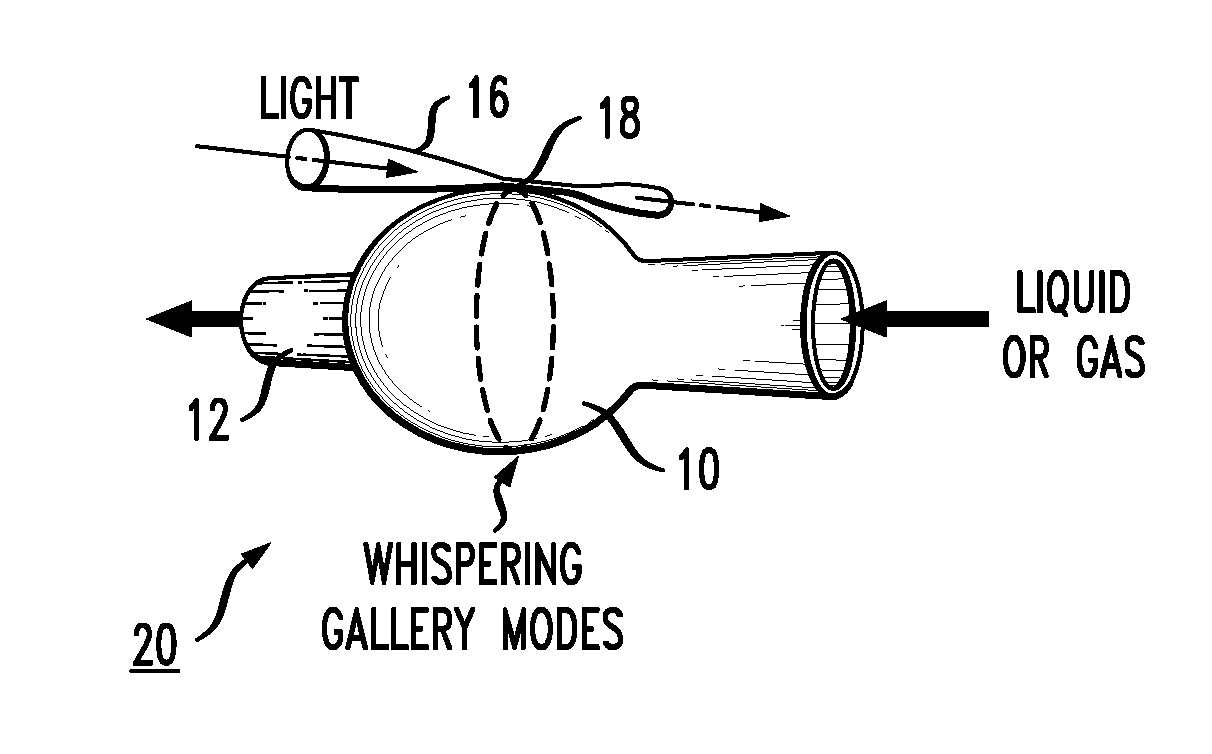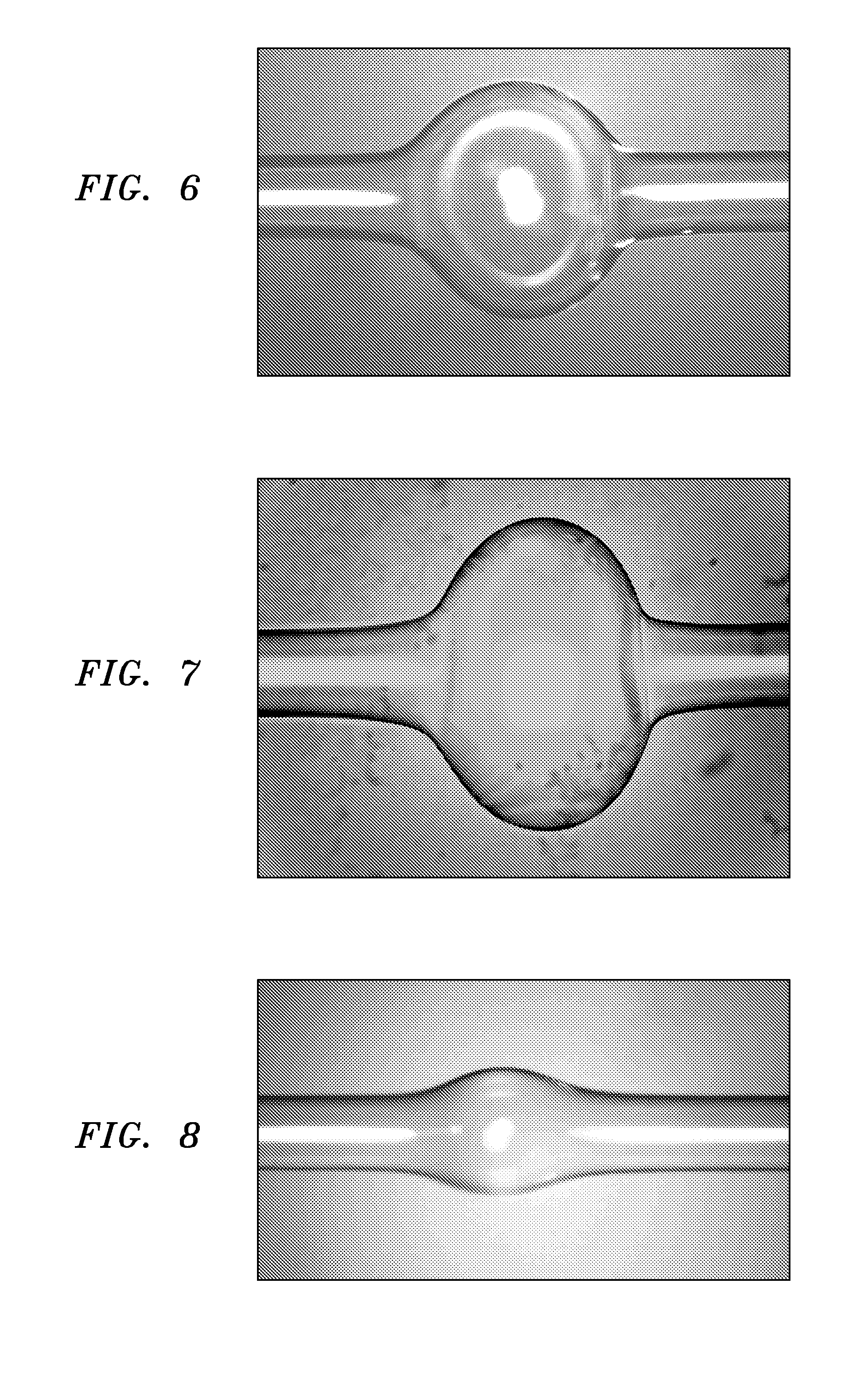Microbubble optical resonator
a micro-bubble optical resonator and optical sphere technology, applied in semiconductor lasers, instruments, other domestic objects, etc., can solve the problems of difficult “tune” and adjustment, difficult to maintain and control optical microspheres on a repeated basis, and difficult to use optical microspheres as filtering elements, etc., to improve rigidity and stability of the device, and high coupling efficiency
- Summary
- Abstract
- Description
- Claims
- Application Information
AI Technical Summary
Benefits of technology
Problems solved by technology
Method used
Image
Examples
Embodiment Construction
[0028]FIG. 2 illustrates an exemplary microbubble 10 formed along a section of optical microcapillary 12 in accordance with the principles of the present invention. As shown, the “bubble” takes the form of a curved film of optically transparent material, in this case the material used to form microcapillary 12 itself. Various methods may be used to create microbubble 10, where an exemplary method utilizes local melting of a section of microcapillary 12 while under pressure. FIG. 3 illustrates an alternative arrangement, with a microbubble 10 formed at a terminal portion 14 of microcapillary 12. In either configuration, it is to be understood that the microbubble need not be ‘spherical’ in form, and may take the shape of an elongated or squeezed bubble. One or more such microbubbles may be formed along a section of microcapillary and the bubble(s) may dominate the entire extent of the microcapillary, or only a portion thereof.
[0029]Optical microbubble resonator 10 as shown in FIG. 2 ...
PUM
| Property | Measurement | Unit |
|---|---|---|
| diameters | aaaaa | aaaaa |
| thickness | aaaaa | aaaaa |
| optically transparent | aaaaa | aaaaa |
Abstract
Description
Claims
Application Information
 Login to View More
Login to View More - R&D
- Intellectual Property
- Life Sciences
- Materials
- Tech Scout
- Unparalleled Data Quality
- Higher Quality Content
- 60% Fewer Hallucinations
Browse by: Latest US Patents, China's latest patents, Technical Efficacy Thesaurus, Application Domain, Technology Topic, Popular Technical Reports.
© 2025 PatSnap. All rights reserved.Legal|Privacy policy|Modern Slavery Act Transparency Statement|Sitemap|About US| Contact US: help@patsnap.com



